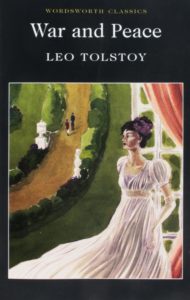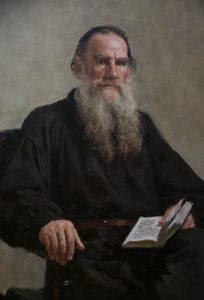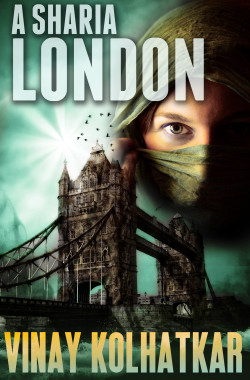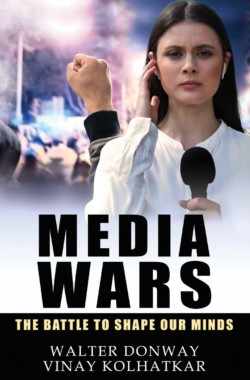War and Peace is to Naturalism what Atlas Shrugged is to Romanticism
If, today, “serious” fiction is equated with the literary school of Realism—and it is and has been for more than a century—then readers, writers, and critics who have reached a consensus about “the greatest novel ever written” probably are right on target: War and Peace published in 1869 by Russian novelist Count Leo Tolstoy.
If, today, “serious” fiction is equated with the literary school of Realism—and it is and has been for more than a century—then readers, writers, and critics who have reached a consensus about “the greatest novel ever written” probably are right on target: War and Peace published in 1869 by Russian novelist Count Leo Tolstoy.
Well, or maybe Anna Karenina, also by Tolstoy. A massive survey by TIME magazine asking more than 120 of the world’s most celebrated authors to name the great works of fiction put Anna Karenina first among the 10 all-time greats and War and Peace third.
It hardly matters. War and Peace is not just a universally celebrated novel, it is a cultural icon and a synonym for profound fiction. It is a time-worn humorous reference to the obligation to slog through the world’s great literature. And always good for an article: e.g., “Seven Reasons You Should Give War and Peace A Chance” in the Huffington Post.
But perhaps the real test is to ask the opposition. The literary school of Romanticism—the historic alternative and contrast to Realism—scarcely exists, today. Its core emphasis on plot, arising from a view of the individual as shaping his own destiny by choosing values and fighting for them, still draws huge audiences to so-called “popular” fiction—today viewed as “genres” such as action, detective, romance, fantasy, and sci-fi. But the only enduringly popular novelist who is a self-identified Romanticist and whose novels such as Atlas Shrugged are viewed as very serious literature indeed by millions of readers is Ayn Rand. She also is the foremost philosophical critic of Realism (which she often calls “Naturalism”) in literature.
[Rand] also is the foremost philosophical critic of Realism (which she often calls “Naturalism”) in literature. She has identified Leo Tolstoy as the quintessential Realist and his novels as the pinnacle of Realism, from which that school of literature has (in accordance with its own internal logic) deteriorated to reach its state today.
She has identified Leo Tolstoy as the quintessential Realist and his novels as the pinnacle of Realism, from which that school of literature has (in accordance with its own internal logic) deteriorated to reach its state today. In her book on esthetics, The Romantic Manifesto, she writes: “Some of the famous Naturalists attempted to maintain Shakespeare’s abstract level, i.e., to present their views of human nature in metaphysical terms (for example, Balzac, Tolstoy). But the majority, following the lead of Emile Zola, rejected metaphysics, as they rejected values, and adopted the method of journalism: the recording of observed concretes.”
In Fiction Writing, she says: “A Naturalistic writer may sometimes have a good description [of observable concretes]. Tolstoy, the archetype of a Naturalist, often has very eloquent ones. But to the extent to which they are good, they are done by the Romantic method—i.e., by means of carefully selected, well-observed concretes that capture the essentials of a scene.”
I am a writer and have spent a good deal of time reading fiction, including “serious” literature, but between my discovery of Atlas Shrugged and my getting around to reading War and Peace, this summer, I let 56 years slip by.
 Comparison of the two books is unavoidable. The Oxford World Classics edition of War and Peace runs to 1,350 pages. Atlas Shrugged weighs in at 1,168 pages. In that sense, Atlas is a stereotypically “big, philosophical Russian novel” by a Russian-born writer. When you have finished the story in War and Peace, meeting 580 characters, some historical, some fictional, as the charming aristocratic lives, loves, and philosophical quests of the Russian nobility are shattered by the invasion of Russia by Napoleon’s gigantic army in 1812, you get a dozen chapters (although Tolstoy kept his chapters short) of “epilogues.” There, Tolstoy offers philosophical explanation and argumentation about the meaning of the book’s events. Comparison with Galt’s speech at the climax of Atlas Shrugged, notorious for its length, is unavoidable.
Comparison of the two books is unavoidable. The Oxford World Classics edition of War and Peace runs to 1,350 pages. Atlas Shrugged weighs in at 1,168 pages. In that sense, Atlas is a stereotypically “big, philosophical Russian novel” by a Russian-born writer. When you have finished the story in War and Peace, meeting 580 characters, some historical, some fictional, as the charming aristocratic lives, loves, and philosophical quests of the Russian nobility are shattered by the invasion of Russia by Napoleon’s gigantic army in 1812, you get a dozen chapters (although Tolstoy kept his chapters short) of “epilogues.” There, Tolstoy offers philosophical explanation and argumentation about the meaning of the book’s events. Comparison with Galt’s speech at the climax of Atlas Shrugged, notorious for its length, is unavoidable.
Ayn Rand referred to Atlas Shrugged as a “metaphysical novel”—her attempt to explain the meaning of man’s existence, to “say it all”—and added that novelists have (at most) one such work in them. As another metaphysical novel, she cited the grand canvas of Victor Hugo in Les Miserables (near the top of anyone’s list of the 10 great Romantic novels and outstripping War and Peace at 1,376 pages in the Modern Classic edition.)
History has its own dramas. The great Russian Realist, traveling through Europe in 1860-61, met Victor Hugo and read and praised the newly published Les Miserables. Among the epic fictional scenes in that novel is the Battle of Waterloo, which Tolstoy admired and seems to have used as an inspiration for his legendry characterizations of the Battles of Austerlitz and Bordino. (Bordino has the dubious distinction of including the bloodiest single day in all of the Napoleonic wars, with some 70,000 casualties. It also is viewed as the beginning of the end of Napoleon’s meteoric career.)
Just as the fate of America is the epic setting of Atlas Shrugged, the fate of Russia in the “Patriotic War” is the “plot” of War and Peace. Of course, for Russian readers, there was and is no suspense about the outcome. In Tolstoy’s time, veterans of that war, including his own father, were still alive. Personally, I found myself captured by the drama of the war more than by any character except, perhaps, Natasha (whom I discuss below).
By any reckoning, it is an astonishing story—not least of the decrepit, aging, one-eyed veteran, General Kutuzov, made supreme commander in desperation when other generals kept losing battles and Napoleon approached Moscow.
Every political and moral pressure is applied to Kutuzov to stop retreating and fight Napoleon. His greatness is that he does not fight, when he can help it—the battle of Bordino is a partial exception—and stolidly endures universal execration when Moscow falls without a great defensive battle. Time, length of the French supply line, and the nature of occupying armies are Kutuzov’s allies against Napoleon’s supposed genius. After five weeks looting Moscow, which in the end is virtually burned down, and with the Russian winter approaching, Napoleon and his army abruptly make a run for home. It is then that the Russia army, as well as thousands of Russian peasants on their own, begin guerilla warfare. By some estimates, only 15 percent of the French army of 600,000 survived to exit Russia. In the end, Napoleon abandoned them and raced alone back to Paris.
 Like Ayn Rand, Tolstoy held his convictions with an emphatic seriousness in his work and life. War and Peace came relatively early in his career (in contrast to Ayn Rand’s Atlas Shrugged, her final fiction). Although famous in his twenties for his semi-autobiographical trilogy. Childhood, Boyhood, and Youth (1852-1856), and Sevastopol Sketches (he gave up compulsive gambling and whoring to fight in the Crimean War, becoming a second lieutenant of artillery), he was only 41 when War and Peace was published. With a certain Randian capacity to astonish, Tolstoy later disavowed the value of the book (saying it was not true to life) and denied it even was a novel. He viewed Anna Karenina as his first “novel.”
Like Ayn Rand, Tolstoy held his convictions with an emphatic seriousness in his work and life. War and Peace came relatively early in his career (in contrast to Ayn Rand’s Atlas Shrugged, her final fiction). Although famous in his twenties for his semi-autobiographical trilogy. Childhood, Boyhood, and Youth (1852-1856), and Sevastopol Sketches (he gave up compulsive gambling and whoring to fight in the Crimean War, becoming a second lieutenant of artillery), he was only 41 when War and Peace was published. With a certain Randian capacity to astonish, Tolstoy later disavowed the value of the book (saying it was not true to life) and denied it even was a novel. He viewed Anna Karenina as his first “novel.”
Without knowing in detail what led Tolstoy to that judgment of War and Peace, I would identify his famous heroine, the young aristocratic beauty, Countess Natasha Rostova, as a Romantic heroine, pure and simple. Just 13 years old when the novel begins (but 28 when it ends), she as portrayed with the capacity for romantic love, glamor, and radiant sense of life of a soul nakedly open to pure happiness. Natasha, played by Audrey Hepburn in the 1956 movie, by the way, has the larger-than-life human “size” of a Victor Hugo character. So, for that matter, does Mary Bolkoskaya, a woman of sainted Christian devotion and self-sacrificing acceptance. And Tolstoy’s heroes like Prince Andrei strike poses suggestive of a character from Hugo’s novels.
Despite its scope, however, with cinematic movement in its hundreds of brief chapters from ballroom to battlefield, from Moscow in flames to a wolf hunt on a great estate, from the quarters of Napoleon to Emperor Alexander’s palace, the events of War and Peace are relentlessly chronological.
Despite its scope, however, with cinematic movement in its hundreds of brief chapters from ballroom to battlefield, from Moscow in flames to a wolf hunt on a great estate, from the quarters of Napoleon to Emperor Alexander’s palace, the events of War and Peace are relentlessly chronological. By the end, most of the characters we have met have died; others have changed not quite beyond recognition. And really the fate of no character still alive has been resolved—unless the Patriotic War itself is viewed as a character.
Leo Tolstoy’s moral seriousness made him larger than life. I would say that the same is true of Ayn Rand, but history now attests to Tolstoy’s stature. He became a Christian literalist, taking as his text the Sermon on the Mount; adopted a morality of asceticism as the path to spiritual salvation; became a thoroughgoing pacifist; and preached the ideas of Henry George, the advocate of the “single tax” (a.k.a., economic silver bullet) to remove land from the category of private property. He wrote endless volumes of polemics as his life stretched to 82 years (died 1908), directly influencing figures such as Mahatma Gandhi.
He came to renounce all his inherited property and to reject ownership of the copyrights of his works (not surprisingly, his initially happy marriage ended with the bitterest hostility on record among literary figures). As he was nearing death, he snuck out of the house on a winter night, with virtually nothing, and died in a train station—reportedly preaching Christian sacrifice to his fellow passengers.
As Ayn Rand argued that the fundamental fact about human nature is free will, Tolstoy devoted his lengthy philosophical epilogues to War and Peace to arguing for strict determinism.
As Ayn Rand argued that the fundamental fact about human nature is free will, Tolstoy devoted his lengthy philosophical epilogues to War and Peace to arguing for strict determinism. Readers and critics have questioned how that explains anything about War and Peace, where characters like Pierre Bezukhov (a fictional image of Tolstoy) go through life searching for ultimate meaning, experience traumatic moral transformations, and become apostles of the power of love and goodness.
In truth, Tolstoy’s impetus in his epilogue is to explain war: Why six-hundred thousand Frenchmen and other Europeans heeded Napoleon’s “order” or “plan” to invade Russia. Arguing against history told in terms of the choices of heroes, or “great men,” Tolstoy both in the novel and in the epilogue challenges the view that Napoleon “caused” the 1812 war—or by any conceivable logic could have caused it. If there ever is to be a science of history, he concludes, the casual role of human freedom must be reduced to the miniscule.
The plot-theme of Atlas Shrugged is that one man, John Galt, vows to “stop the motor of the world” in order to end history’s racket of sacrificing the men of ability in the name of altruism—and succeeds. Of course, this is a dramatizing of the power of ideas to set the course of history—as they set the course of an individual life. The novel’s action from first to last page is driven by the reasoning mind and choices of a single individual.
The action in War and Peace supposedly is driven by historical determinism (Tolstoy was enraptured with Arthur Schopenhauer’s book, The World as Will and Representation). Tolstoy denied with equal vehemence that great historical figures or ideas move history. He scoffed at the notion that Jean Jacques Rousseau’s Social Contract, or any other work of philosophy or ideas, had any role in explaining the French Revolution. The plot-theme of War and Peace, as Tolstoy apparently viewed it, is that individuals go through life—including the most momentous events—deluded into believing that their choices, plans, and actions shape their destiny.
And thus, Tolstoy became a founding father of literary Realism. And Ayn Rand became the redeemer of the Romantic movement in our era: its philosophical advocate, and—a far more crucial and difficult achievement—creator of a novel that for millions of readers became their ultimate experience of the potential of a work of fiction to move the soul.
« If Art Can Be Anything, Then It Is Nothing The Great Romantic Novel You Haven’t Read »










